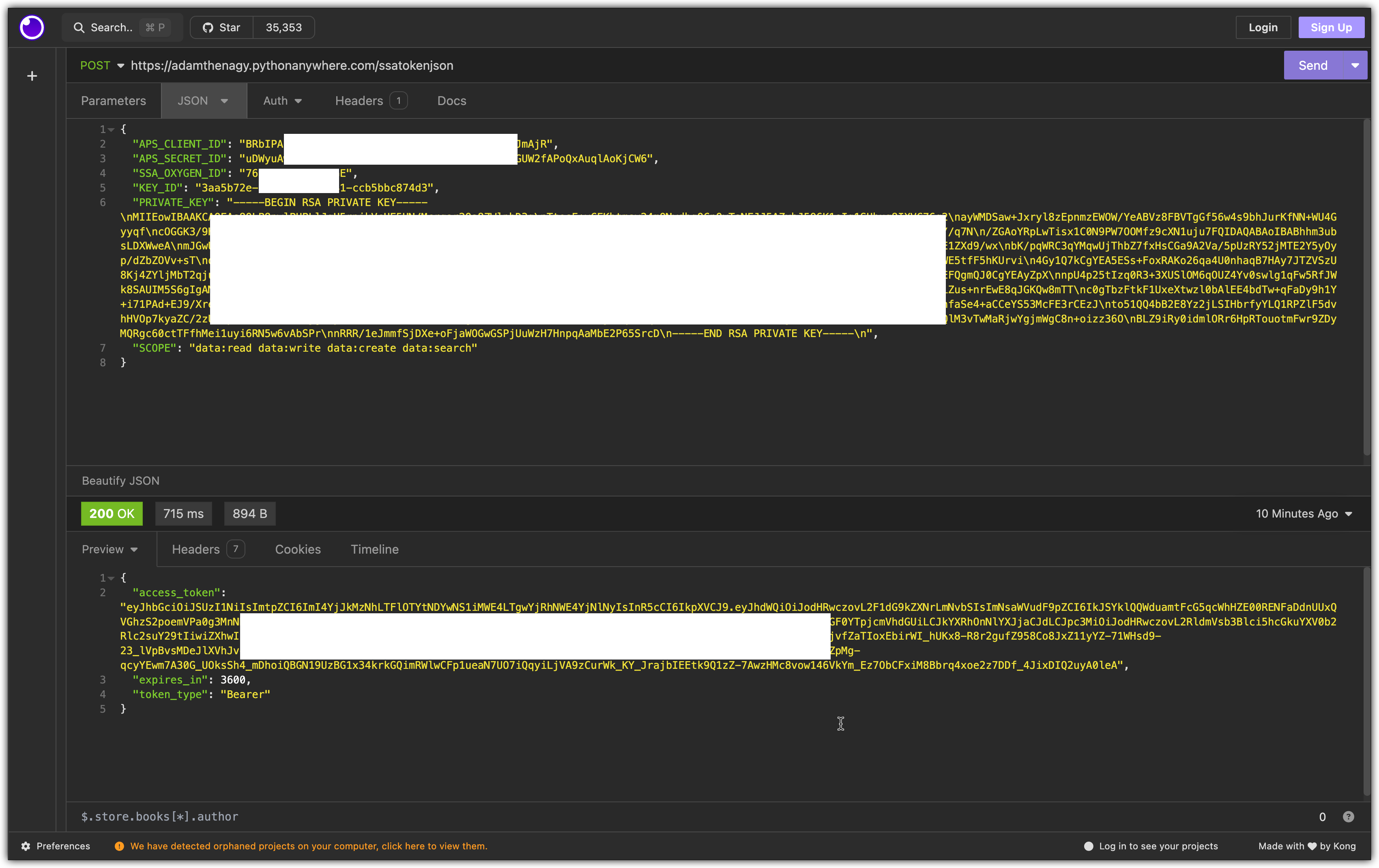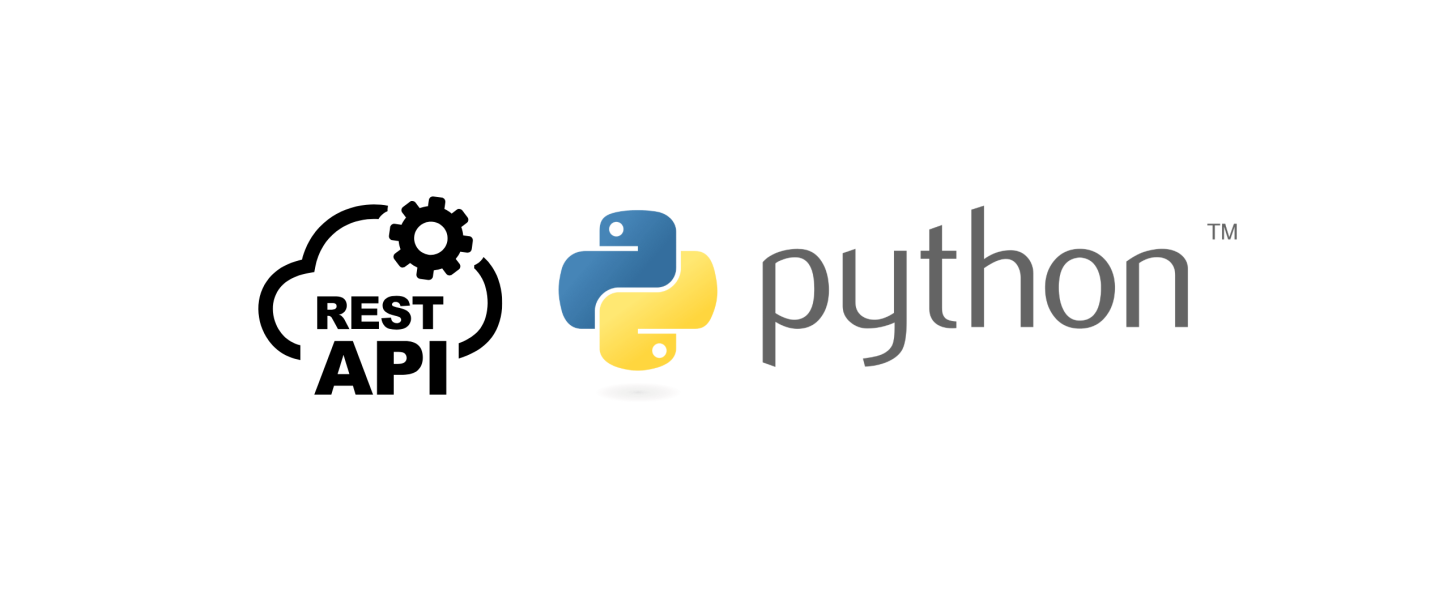Sometimes when using a low-code/no-code environment to create a solution you still need a bit of programming that might be difficult to achieve there.
In that case you could implement the needed functionality somewhere else, expose it e.g. as a REST API endpoint and use it from the low-code/no-code environment.
Such functionality could be generating an SSA token.
Since it's not resource intensive at all, you just need to run a tiny bit of code once every hour, it might be possible with a free hosted solution as well.
When looking for such a solution for Python, I found https://www.pythonanywhere.com and gave that a try.
(Note: we also have a blog post on creating a Python web app and this toolkit might also be useful if using Python with APS)
1) Sign up
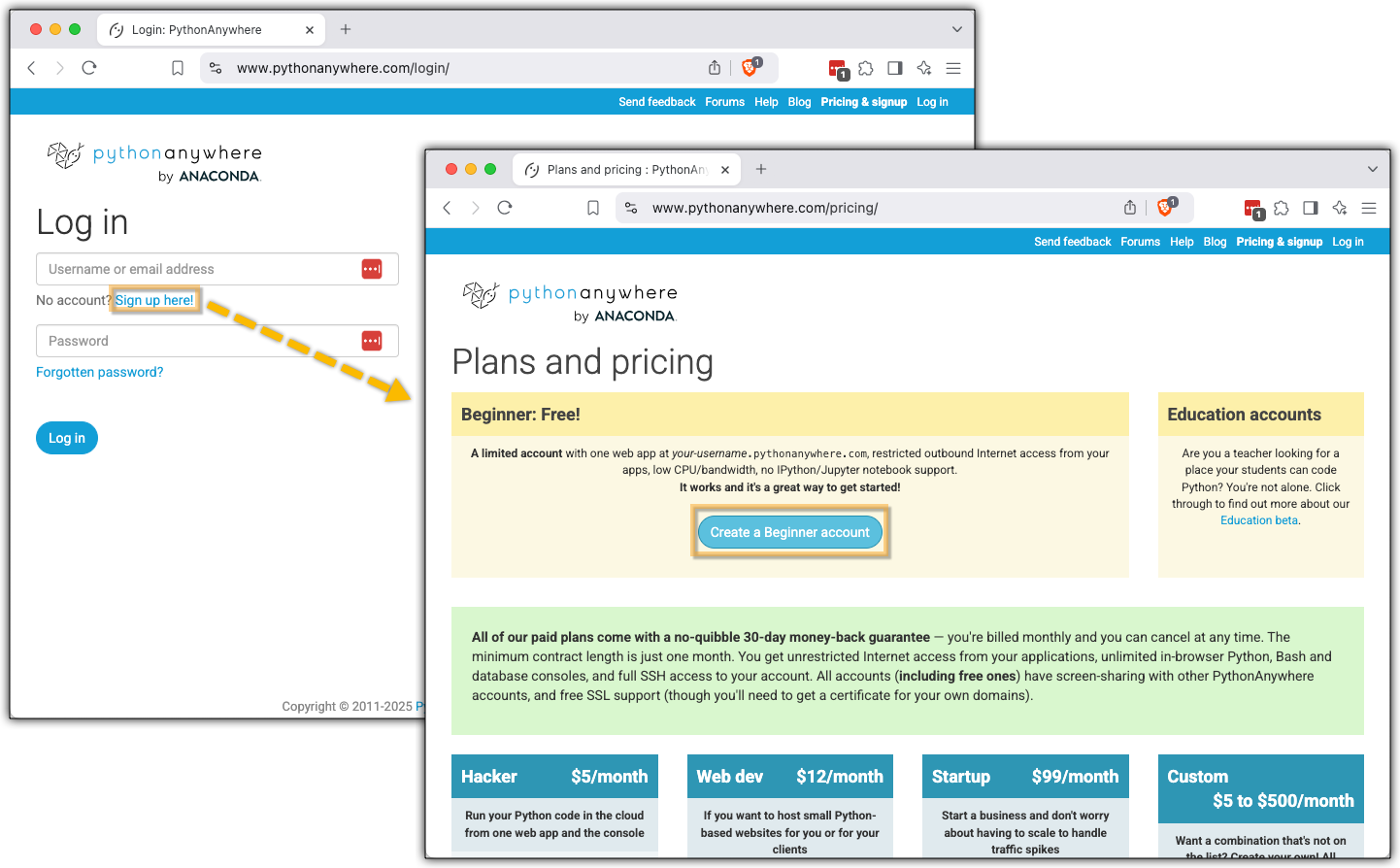
2) Create a new Flask web app
On the "Web" tab
- Click "Add a new web app"
- Click "Next"
- Select "Flask"
- Select "Python 3.10"
- Click "Next"
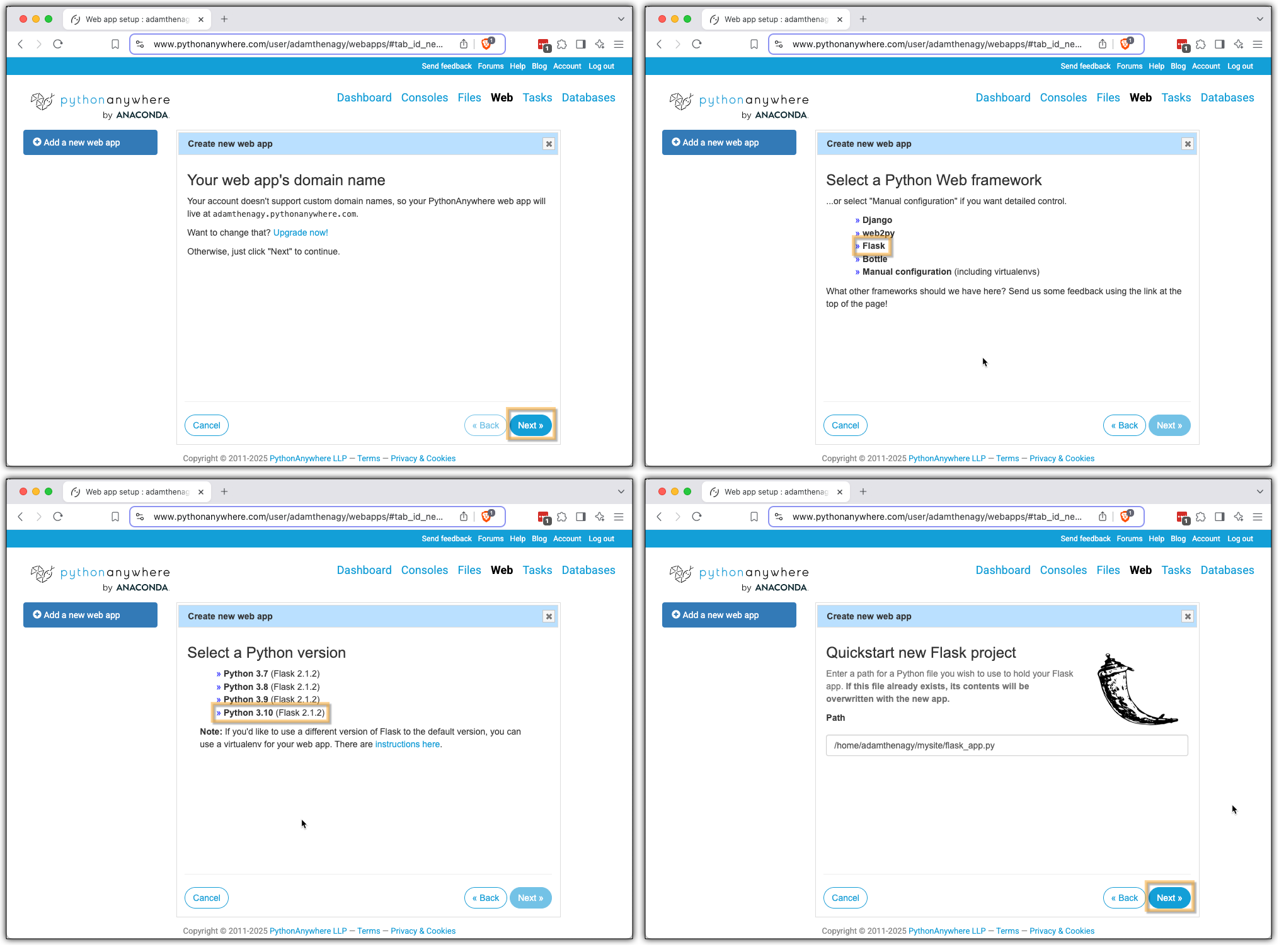
3) Expose a REST API endpoint
At the end of the previous step you ended up on the configuration page of your new web app.
You just have to
- Scroll down
- Click on "Go to directory" of the "Source code"
- Click on "flask_app.py" to edit its content

We just have to replace the file's content with this:
import jwt, time, requests
from flask import Flask, json, request
app = Flask(__name__)
def generate_jwt_assertion(KEY_ID, PRIVATE_KEY, APS_CLIENT_ID, SSA_OXYGEN_ID, SCOPE):
return jwt.encode({
"iss": APS_CLIENT_ID,
"sub": SSA_OXYGEN_ID,
"aud": "https://developer.api.autodesk.com/authentication/v2/token",
"exp": int(time.time()) + 300,
"scope": SCOPE.split(" ")
}, PRIVATE_KEY, algorithm="RS256", headers={"alg": "RS256", "kid": KEY_ID})
def get_access_token(jwt_assertion, APS_CLIENT_ID, APS_SECRET_ID, SCOPE):
response = requests.post('https://developer.api.autodesk.com/authentication/v2/token', headers={
'Accept': 'application/json',
'Content-Type': 'application/x-www-form-urlencoded'
}, data={
'grant_type': 'urn:ietf:params:oauth:grant-type:jwt-bearer',
'assertion': jwt_assertion,
'scope': SCOPE
}, auth=(APS_CLIENT_ID, APS_SECRET_ID))
return response.json()
@app.route('/ssatokenjson', methods=['POST'])
def post_ssatokenjson():
data = request.get_json()
APS_CLIENT_ID = data['APS_CLIENT_ID']
APS_SECRET_ID = data['APS_SECRET_ID']
SSA_OXYGEN_ID = data['SSA_OXYGEN_ID']
KEY_ID = data['KEY_ID']
PRIVATE_KEY = data['PRIVATE_KEY']
SCOPE = data['SCOPE']
jwt_assertion = generate_jwt_assertion(KEY_ID, PRIVATE_KEY, APS_CLIENT_ID, SSA_OXYGEN_ID, SCOPE)
access_token = get_access_token(jwt_assertion, APS_CLIENT_ID, APS_SECRET_ID, SCOPE)
return json.dumps(access_token)Then click the highlighted button to refresh our web app:
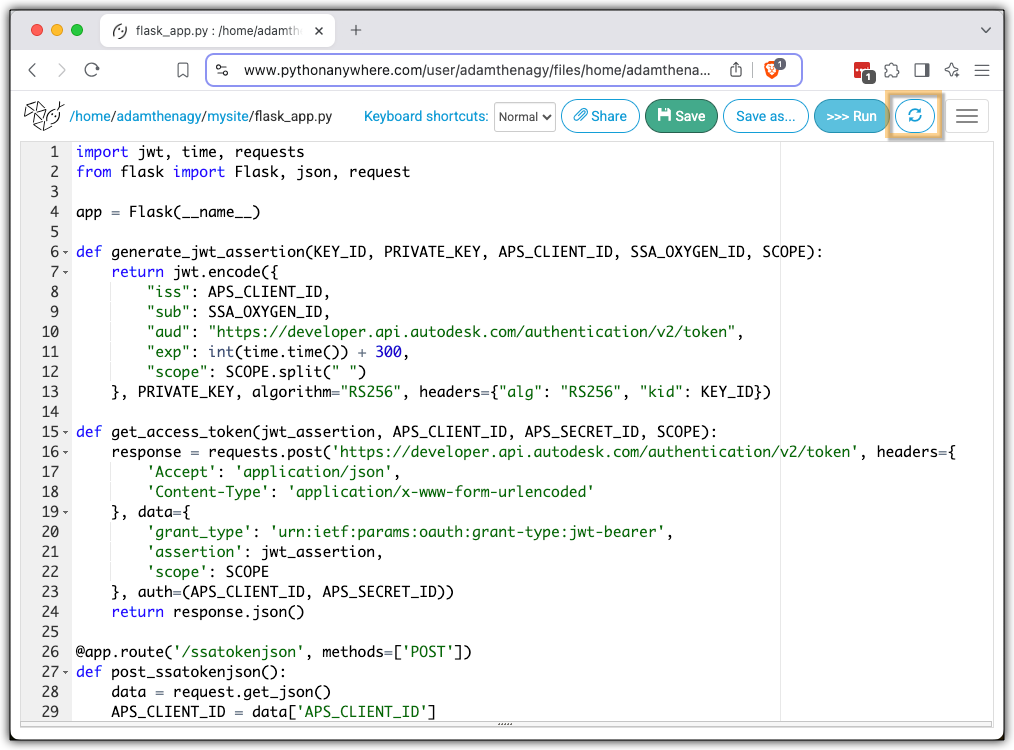
4) Test REST API endpoint
Now we can use a program like Insomnia (or Postman, etc) to test the endpoint, in our case called https://adamthenagy.pythonanywhere.com/ssatokenjson
It just requires the Content-Type: application/json header and a json body like this containing the values for APS_CLIENT_ID, APS_SECRET_ID, SSA_OXYGEN_ID, KEY_ID, PRIVATE_KEY, SCOPE
In cURL it would look like this:
curl --request POST \
--url https://adamthenagy.pythonanywhere.com/ssatokenjson \
--header 'Content-Type: application/json' \
--data '{
"APS_CLIENT_ID": "BRbIPA_____JmAjR",
"APS_SECRET_ID": "uDWyuA__________lAoKjCW6",
"SSA_OXYGEN_ID": "76Z____UGE",
"KEY_ID": "3aa5b72e-_______-ccb5bbc874d3",
"PRIVATE_KEY": "-----BEGIN RSA PRIVATE KEY-----\nMIIEowIBAAKCA________IpqAaMbE2P65SrcD\n-----END RSA PRIVATE KEY-----\n",
"SCOPE": "data:read data:write data:create data:search"
}'